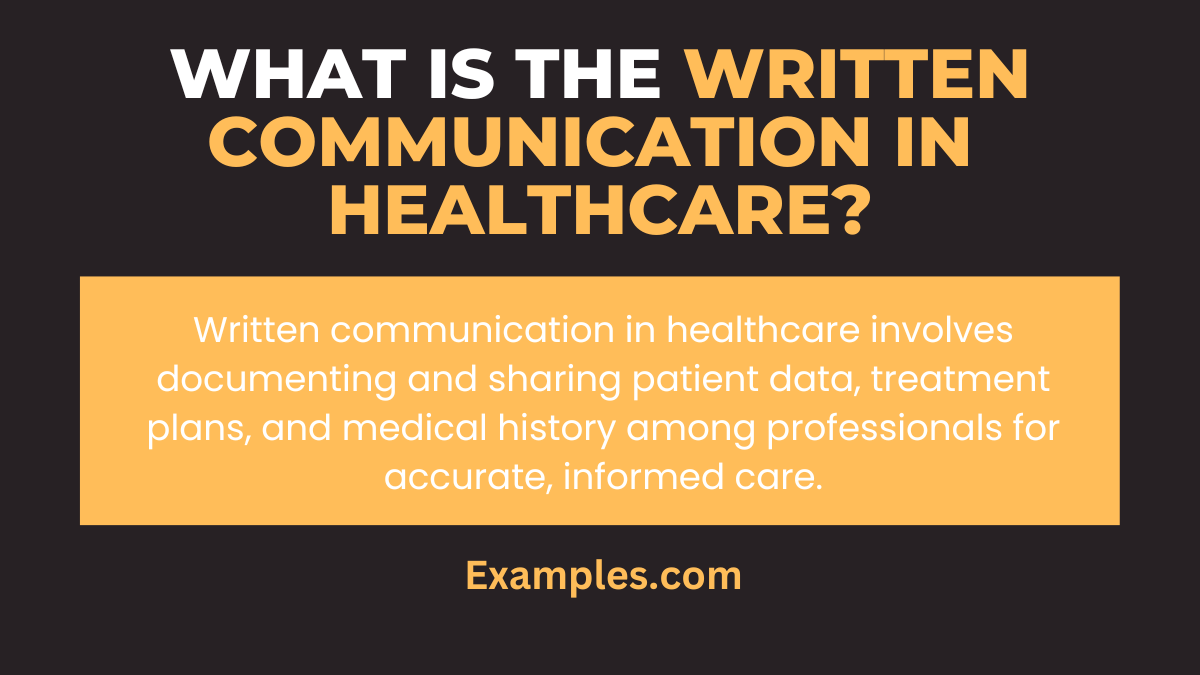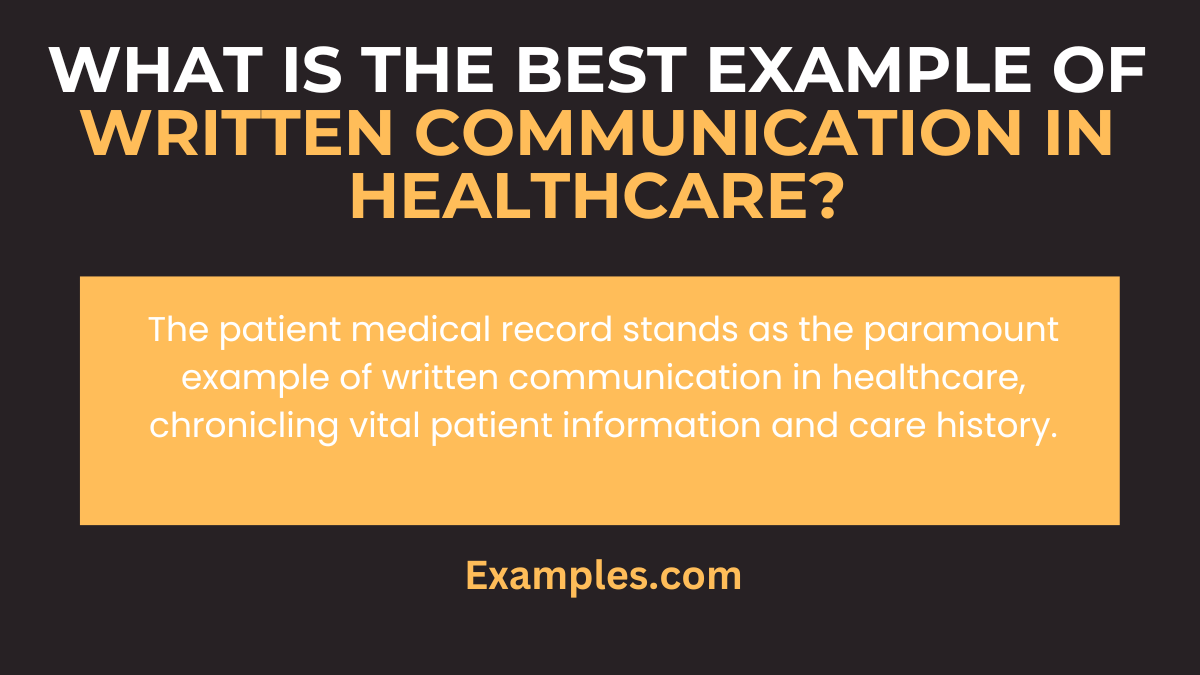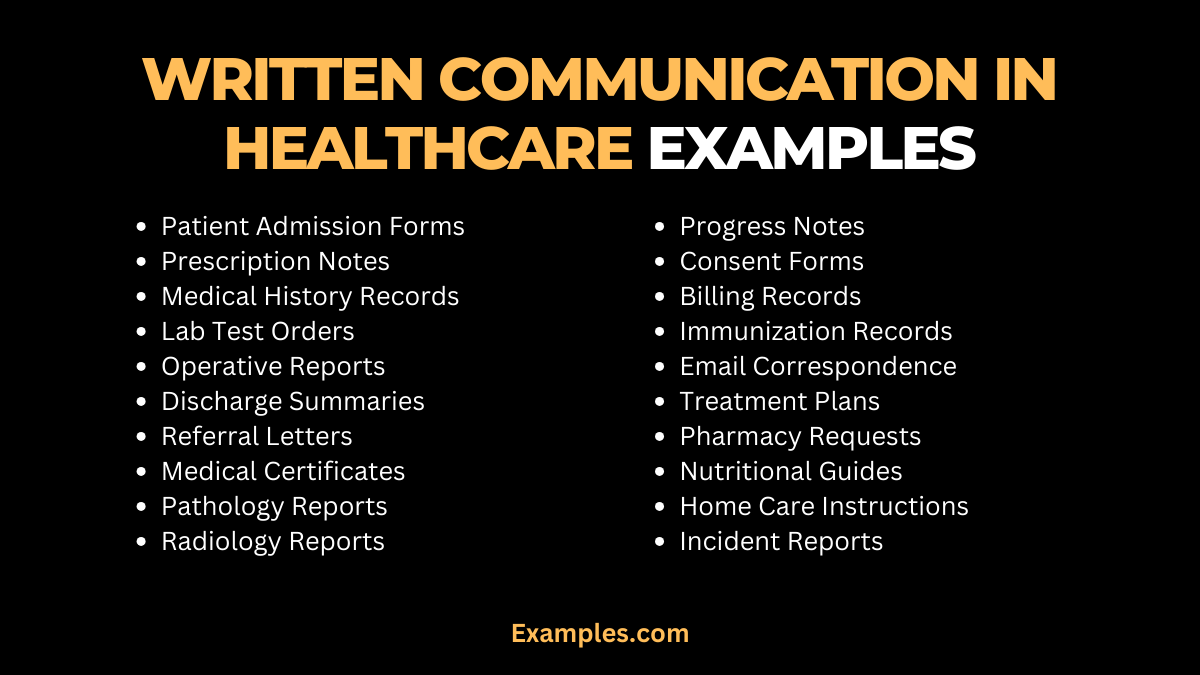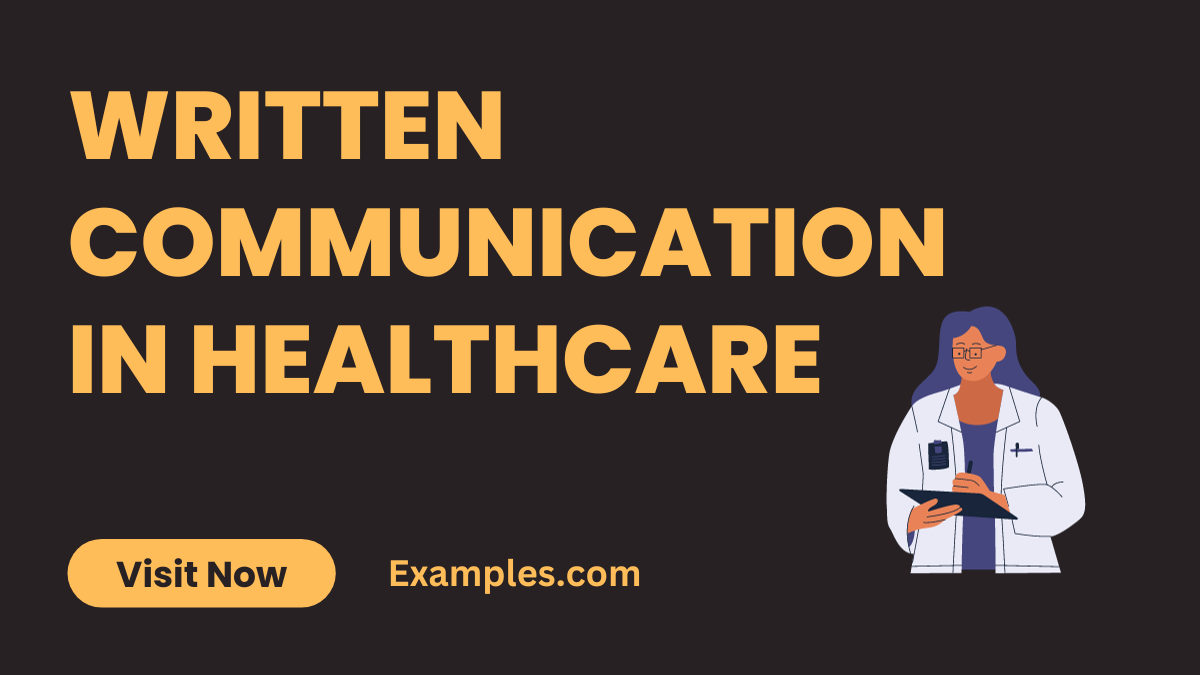19+ Written Communication in Healthcare Examples
Discover the essence of effective patient care through our complete guide on Written Communication in Healthcare. This comprehensive overview delves into vital Communication Examples, shedding light on the nuances of medical documentation, patient interaction, and information exchange. Enhance your understanding of healthcare communication standards and practices to improve patient outcomes and streamline healthcare delivery.
What is the Written Communication in Healthcare? – Meaning

Written communication in healthcare is the systematic documentation and exchange of patient information, treatment plans, and medical history between healthcare professionals and patients. It forms the backbone of medical records, ensuring continuity of care, legal accuracy, and informed decision-making. This method encompasses various forms, from patient charts and emails to formal reports, all aimed at delivering clear, concise, and accurate information within the healthcare setting.
What is the Best Example of Written Communication in Healthcare?

The best example of written communication in healthcare is arguably the patient medical record. It provides a comprehensive and continuous account of a patient’s medical history, treatment plans, medications, allergies, and diagnostic tests. Medical records facilitate clear communication among healthcare providers, ensure legal accuracy, and enhance patient care by providing a detailed account of patient interactions and treatments over time. This vital document serves as a critical tool for medical decision-making and continuity of care.
20 Written Communication in Healthcare Examples

Explore the pivotal role of written communication in healthcare through 20 distinct examples. Each one illustrates the Importance of Written Communication in ensuring efficient patient care and healthcare management. From chart notes to discharge summaries, these Written Communication Examples are integral to maintaining continuity of care, ensuring legal compliance, and enhancing patient-provider relationships. Delve into our Written Communication Journal for insights and strategies to address common communication challenges. Enhance your understanding and application of effective written communication with our comprehensive list of examples and solutions.
- Patient Admission Forms: Initial documentation of patient’s health status.
- Prescription Notes: Instructions for medication.
- Medical History Records: Comprehensive patient health history.
- Lab Test Orders: Requests for patient diagnostics.
- Operative Reports: Detailed surgery documentation.
- Discharge Summaries: End of care documentation.
- Referral Letters: Communication between healthcare providers.
- Medical Certificates: Proof of health status.
- Pathology Reports: Detailed findings of tests.
- Radiology Reports: Imaging test interpretations.
- Progress Notes: Ongoing patient care documentation.
- Consent Forms: Patient agreement for treatment.
- Billing Records: Financial transactions of patient care.
- Immunization Records: History of vaccines.
- Email Correspondence: Communication between providers and patients.
- Treatment Plans: Detailed plan for patient care.
- Pharmacy Requests: Communication with pharmacists for medication provision.
- Nutritional Guides: Patient dietary recommendations.
- Home Care Instructions: Guidelines for post-care.
- Incident Reports: Documentation of any unusual or adverse events.
Written Communication in Healthcare for Business
Mastering written Communication in Healthcare for business is essential for efficient operations and coordination among providers, insurers, and other stakeholders. It embodies the Characteristics of Written Communication with clarity, accuracy, and professionalism. Dive into Examples of Business Communication strategies enhancing healthcare administration and collaboration. Understand how well-crafted memos, policies, and agreements contribute to streamlined services and improved patient care.
- Policy Updates: Ensure all staff are aware of new protocols. Communicate changes effectively: “Please review and acknowledge the updated infection control policies attached.”
- Insurance Correspondence: Facilitate claims and coverage discussions. Communicate details succinctly: “Confirm patient eligibility and coverage for the upcoming procedure.”
- Service Contracts: Outline agreements with healthcare vendors. Communicate expectations clearly: “The attached contract outlines the terms for our new medical equipment.”
- Financial Reports: Communicate fiscal health and budget needs. Communicate facts accurately: “The attached report details this quarter’s budget allocation and spending.”
- Compliance Documents: Ensure adherence to healthcare laws. Communicate importance firmly: “Please review the compliance guidelines to ensure our practices are up-to-date.”
What are the Types of Written Communication in Healthcare?
In Written Communication in Healthcare, various forms are employed to maintain patient care quality and legal compliance. From administrative to clinical documentation, understanding these types is vital for healthcare professionals.
- Medical Charts: Patient’s ongoing healthcare record, including treatment and progress notes.
- Discharge Summaries: A summary providing details of the patient’s hospital stay and instructions for home care or follow-up.
- Prescription Notes: Written orders for medication including dosage, frequency, and duration.
- Referral Letters: Communication between primary care providers and specialists regarding patient care.
- Research Articles: Scientific documentation of findings and studies relevant to healthcare practices and patient outcomes.
Download Types of Communication for Healthcare Professionals PDF
What are the Principles of Written Communication in Healthcare?
Effective Written Communication in Healthcare is governed by key principles ensuring clarity, accuracy, and confidentiality. These principles are fundamental in Written Communication in Schools and Written Communication in Education, preparing future healthcare professionals.
- Clarity: Ensure all written communication is clear and easily understood by the reader.
- Accuracy: Maintain precise and correct information in all forms of documentation.
- Confidentiality: Uphold patient privacy and confidentiality at all times.
- Consistency: Keep a consistent format and style to facilitate easy understanding and reference.
- Comprehensiveness: Provide all necessary information to ensure informed decision-making and care continuity.
What is the Importance of Written Communication in Healthcare?
The Importance of Written Communication in Healthcare cannot be overstated. It not only supports effective patient care but also contributes to the broader educational and operational framework within healthcare settings.
- Patient Safety: Accurate and clear written communication is critical for patient safety, reducing the risk of errors.
- Legal and Regulatory Compliance: Documentation helps in adhering to legal requirements and standards of care.
- Continuity of Care: Written records ensure that every healthcare provider involved in a patient’s care has the same information.
- Education and Training: Written communication serves as a key resource in Written Communication in Education for healthcare professionals.
- Operational Efficiency: Efficient written communication streamlines processes, from scheduling to billing, enhancing overall healthcare delivery.
Written Communication in Healthcare Industry
In the Healthcare Industry, written communication plays a vital role in implementing effective healthcare strategies. Clear and precise documentation of patient records, treatment plans, and medical histories ensures seamless coordination among healthcare providers, ultimately enhancing patient care quality. Healthcare Strategies rely on accurate Written Communication Sentence Examples to drive informed decision-making and promote the well-being of patients.
How can Patients Participate in Written Communication in Healthcare?
Patients can engage in written communication in healthcare by providing accurate personal health histories, asking questions, and confirming understanding of treatment plans to Improve Written Communication.
What Legal Considerations are Associated with Written Communication in Healthcare?
Legal considerations include maintaining confidentiality, ensuring accuracy, and adhering to healthcare regulations and laws to mitigate risks associated with written communication in healthcare.
What Role does Technology play in Written Communication in Healthcare?
Technology enhances written communication in healthcare through electronic health records, telehealth communication, and digital tools, improving access and quality of care while facilitating Written Communication in the Classroom.
In conclusion, effective written communication in healthcare is crucial for patient safety, legal compliance, and operational efficiency. By understanding and implementing key strategies for improvement, healthcare providers can ensure clearer, more accurate, and more efficient communication, ultimately leading to better patient outcomes and a more streamlined healthcare system. Embracing technological advancements further enhances this vital communication.



